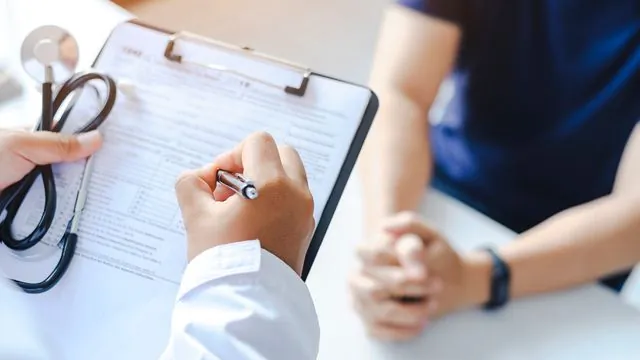
Revolutionary Sensors Could Detect Bacterial Infections in Minutes!
2025-07-02
Author: Jia
Innovative Sensors to Transform Infection Diagnosis
Get ready for a groundbreaking shift in medical diagnostics! Engineers and microbiologists are teaming up to create advanced sensors that can ‘sniff out’ bacterial infections and identify antimicrobial-resistant strains in mere minutes. This exciting research, recently detailed in the journal *Cell Biomaterials*, promises a faster, more cost-effective alternative to traditional diagnostic methods.
Speeding Up Diagnosis with New Technology
One of the major hurdles in fighting antimicrobial resistance is the lack of rapid diagnostic tools. Senior author Andreas Güntner, a mechanical and process engineer from ETH Zurich, leads a pioneering initiative: a device capable of delivering results in seconds or minutes, cutting out the lengthy lab processes that often take hours, if not days.
The Growing Threat of Antimicrobial Resistance
Antimicrobial resistance (AMR) occurs when bacteria adapt to resist drugs meant to eliminate them. This alarming trend complicates infection treatment and accelerates the spread of resistant strains. Güntner emphasizes the urgent need for rapid testing to combat this issue, which could drastically improve patient outcomes.
The Science Behind the Scent of Bacteria
Did you know that doctors used to rely on smell to diagnose certain bacterial infections? For instance, Pseudomonas aeruginosa infections have a sweet, grape-like odor, while Clostridium infections reek of decay. These distinctive smells are linked to volatile organic compounds (VOCs)—tiny molecules released by bacteria and detectable in various bodily fluids.
Harnessing VOCs for Bacterial Detection
Rather than depending on human noses, the research team envisions developing sensors that can identify VOCs in blood, urine, and sputum, similar to technologies used in breathalyzers and air-quality monitors. "We've already commercialized similar sensors for detecting contaminants like methanol; now we're adapting this tech for a more complex environment," reveals Güntner.
Spotting Resistant Bacteria with Precision
The ability of these sensors to differentiate between bacterial species and their antibiotic-resistant variants is a game-changer. Previous studies proved that sensors could tell apart methicillin-resistant Staphylococcus aureus (MRSA) from its non-resistant counterparts, demonstrating the concept's feasibility.
Overcoming Technical Hurdles
Developing these sensors comes with its own set of challenges. Since VOC concentrations are incredibly low, Güntner compares finding the right signals to spotting a single red ball among a billion blue ones. Achieving sensitivity and precision is crucial.
The Role of Machine Learning in Sensor Development
To reach optimal performance, the sensors will utilize a blend of materials—from metal oxides to graphene derivatives. Machine learning will be pivotal in refining sensor design, identifying crucial VOC combinations, and offering insights into resistance patterns.
A Vision for Future Diagnostics
Once fully realized, these sensors promise a portable method for quick infection diagnosis that requires minimal training to operate. This could dramatically enhance real-time infection detection and lead to smarter treatment decisions.
Join the Movement to Improve Patient Care!
Güntner's team is committed to translating breakthroughs in VOC analysis into practical tools for everyday medical use. The ultimate goal? To uplift patient outcomes and promote responsible antibiotic usage, paving the way for a healthier future.



 Brasil (PT)
Brasil (PT)
 Canada (EN)
Canada (EN)
 Chile (ES)
Chile (ES)
 Česko (CS)
Česko (CS)
 대한민국 (KO)
대한민국 (KO)
 España (ES)
España (ES)
 France (FR)
France (FR)
 Hong Kong (EN)
Hong Kong (EN)
 Italia (IT)
Italia (IT)
 日本 (JA)
日本 (JA)
 Magyarország (HU)
Magyarország (HU)
 Norge (NO)
Norge (NO)
 Polska (PL)
Polska (PL)
 Schweiz (DE)
Schweiz (DE)
 Singapore (EN)
Singapore (EN)
 Sverige (SV)
Sverige (SV)
 Suomi (FI)
Suomi (FI)
 Türkiye (TR)
Türkiye (TR)
 الإمارات العربية المتحدة (AR)
الإمارات العربية المتحدة (AR)